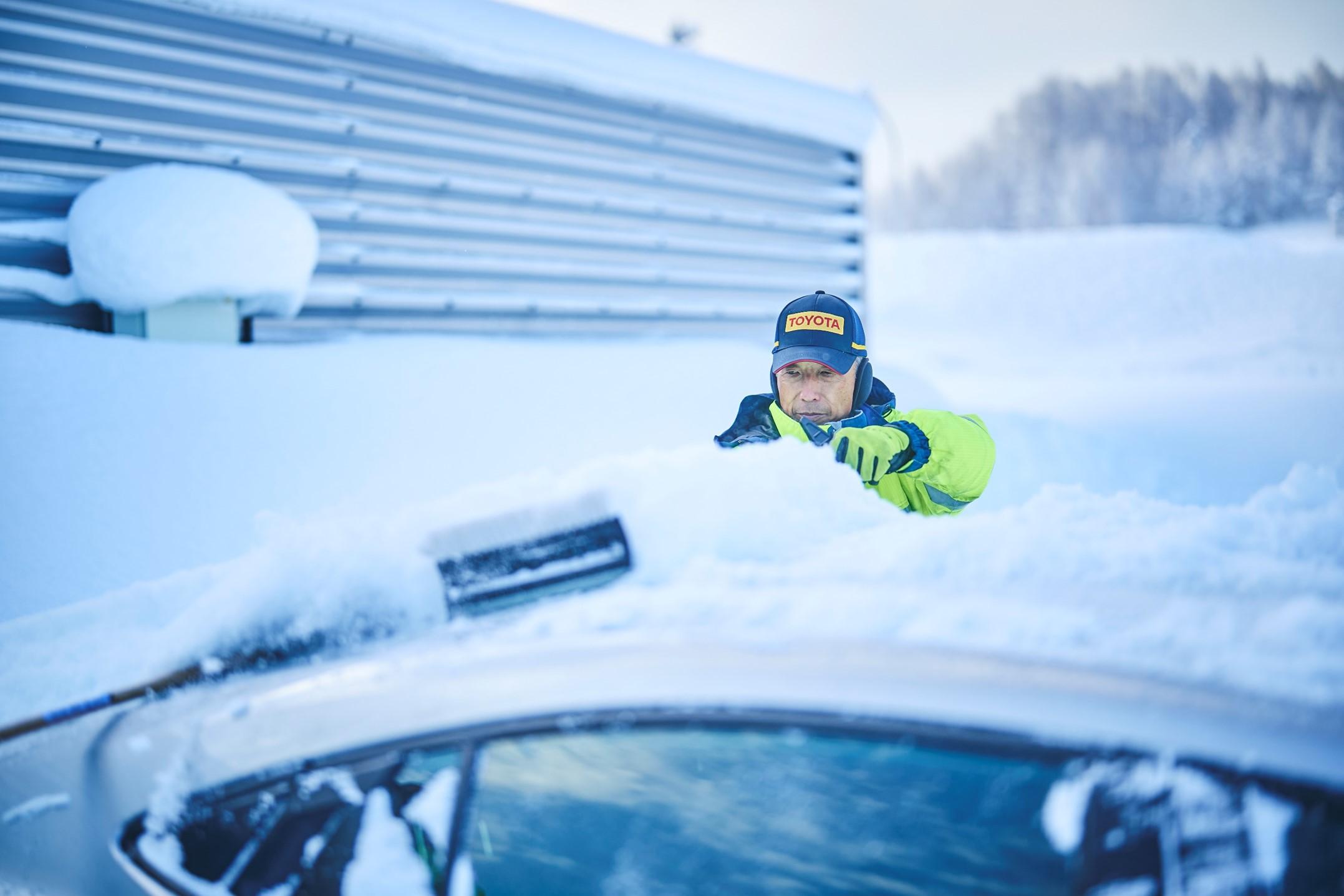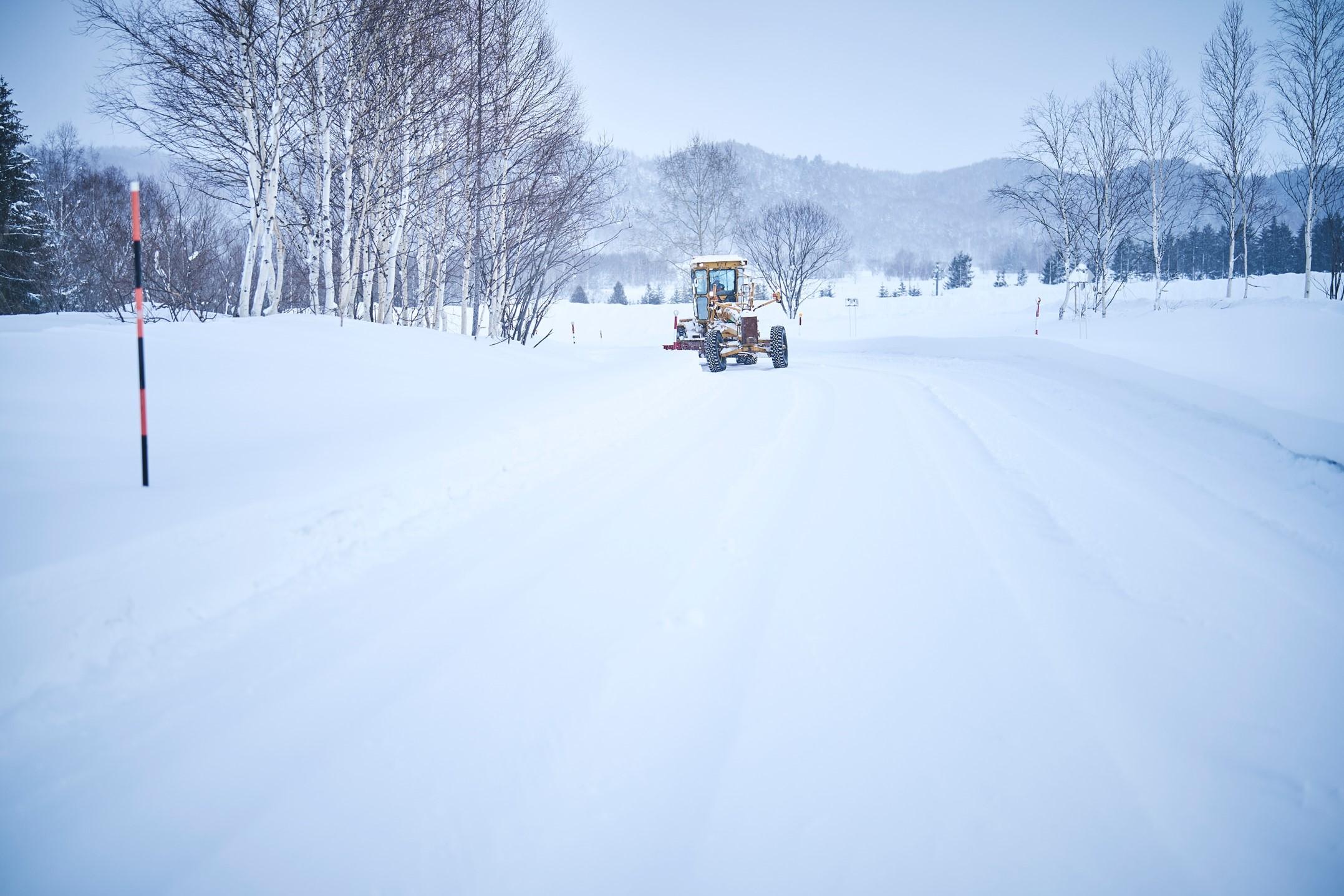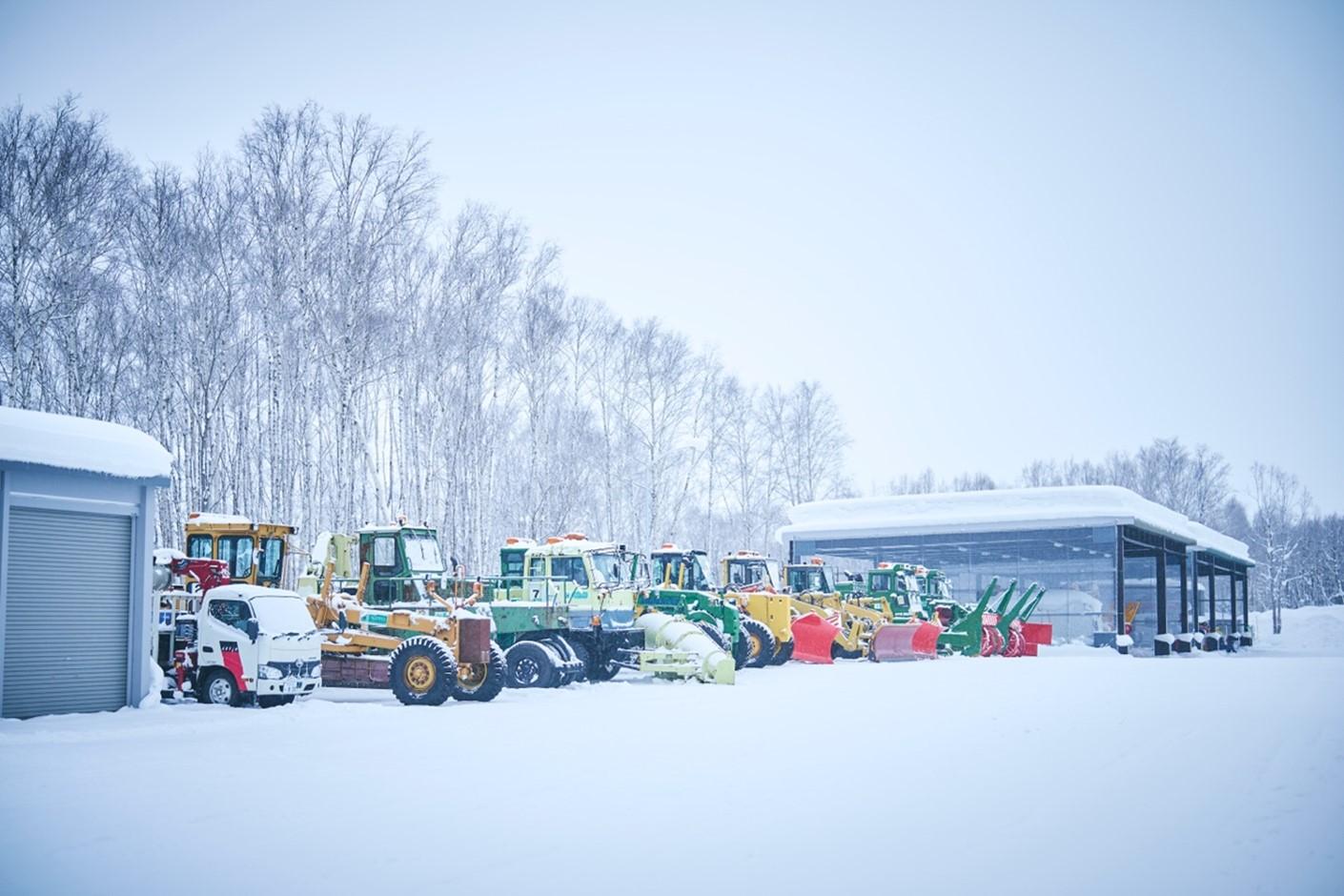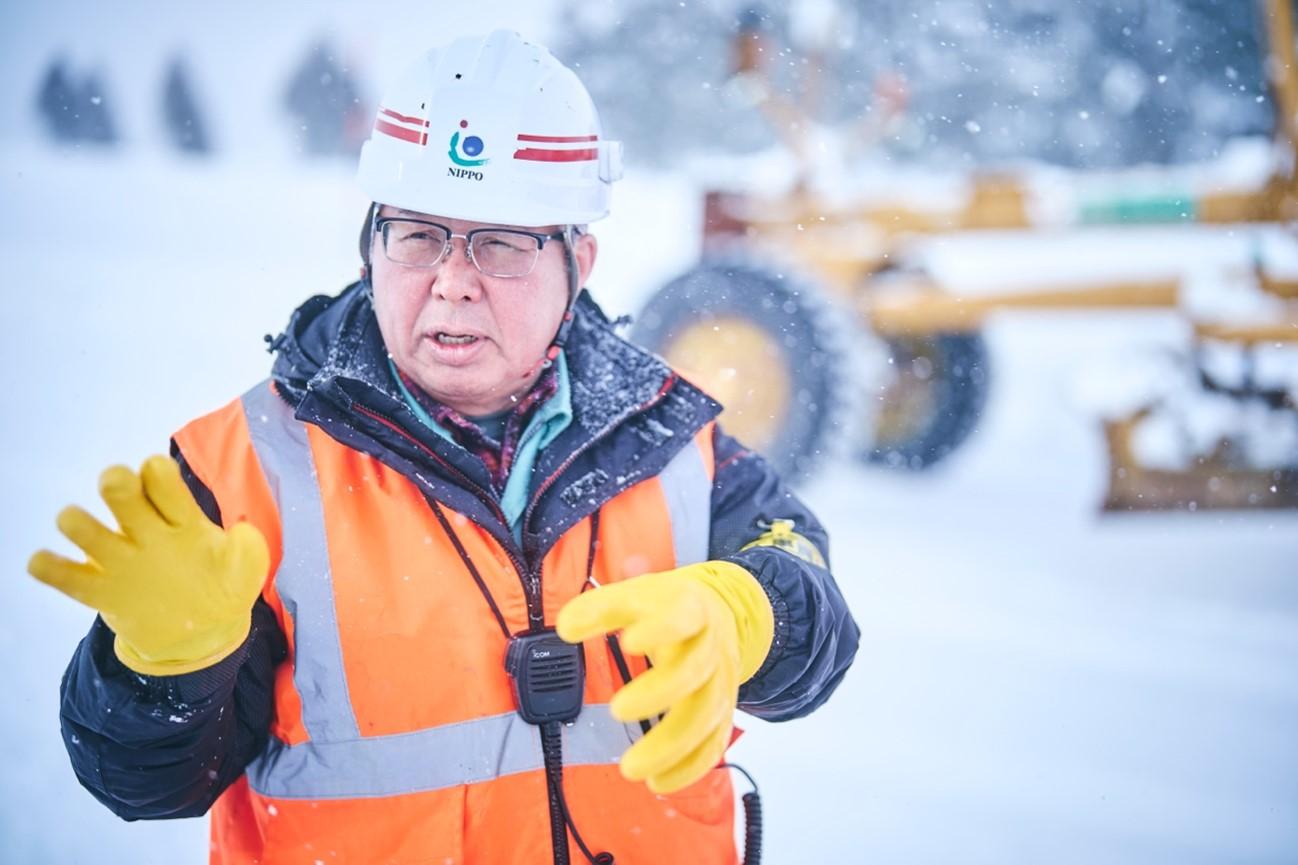
Staying in the -30ºC (-22°F) world of the Shibetsu Proving Ground, this article focuses on late-night operations that play a vital backstage role in making ever-better cars.

After the sun goes down at Hokkaido’s Shibetsu Proving Ground, dozens of heavy vehicles roll out across the snow. What could be getting underway at this hour? For the first time, Toyota Times takes readers inside the Proving Ground in the dead of night.
Packing snow 12cm deep
In winter, a single night’s snowfall can bury Shibetsu under several feet of snow. To prepare courses for the next morning’s testing, teams work through the night to clear snow and level the frosty roads.
First up, we asked the man who oversees course maintenance, Shibetsu Vehicle Testing Section Group Leader Tetsuo Sawada, about the key to preparing the roads.
Sawada
The most important part of course management is ensuring the same conditions, day in and day out.

A clear example is the tire testing track. Here we mainly assess all-season tires for the North American market, which is not possible if the road surface conditions vary from one day to the next.
We also maintain incline sections to ensure that the friction factor of the road is always constant. When preparing an uneven surface, for instance, we work to ensure that it can deliver the shocks or body vibration that the test drivers and development team are looking for.
I myself have Toyota’s Advanced level driving qualification, and most of the other course maintenance personnel are certified test drivers.
In preparing the course, we need to be able to see things from the perspective of the test drivers and development team.
As Sawada’s attention to detail demonstrates, proper cold-climate testing is about more than simply having low temperatures and lots of snow.
Sawada
Based on many years of experience, we prep the compacted snow to a depth of 12 centimeters.

This thickness gives us four or five centimeters that can be cleared off to get the road ready in case of sudden rain or warmer weather.
On the other hand, a depth of more than 12 cm would insulate the snow nearest to the ground, causing it to soften and crumble.
Just a few extra centimeters of snow can make all the difference in testing.
The late-night stars creating on-demand courses
When dealing with nature, keeping the courses so meticulously and carefully maintained is no small feat.

As the snowpack grows thicker, parts adjacent to the earth soften. Meanwhile, spraying water at temperatures below -20ºC (-4℉) creates a thin layer atop the snow surface, causing it to crackle and flake.
To prepare the courses and clear snow, the Shibetsu Proving Ground also enlists outside professionals who are well-versed in these cold-weather phenomena and experts in road surfacing and snow removal.
One such company is the NIPPO CORPORATION. Toyota Times spoke with Shibetsu branch As
NIPPO is the general contractor that built Shibetsu Proving Ground courses like the 10 km First Circuit. Utilizing its road construction and asphalt surfacing technology and expertise, the company has also helped with clearing snow and maintaining the icy tracks.
Sato
I’ve been working with the Shibetsu Proving Ground since around the time the 10 km circuit was completed in 1987.

I started out in course construction, but since 1992 I’ve also been involved in setting up the winter courses, snow removal, and maintenance.
Course maintenance in snowy Shibetsu is said to be a race against time.
Kawamura
We begin at 11:00 p.m. and, with a one-hour break, work to get the courses ready for handover by 7 the next morning.

Heavy snowfalls might prevent us from finishing by 7 a.m., in which case we consult with the course managers to figure out the courses that need to be ready first.
Our night crew consists of 18 people and 16 heavy vehicles. Aside from this team, we also have 12 people doing course maintenance during the day.
One section of the area that replicates snow-covered city streets features rutted roads, dug out by a machine known as a grader.
Sato
Graders are used in road construction to create flat surfaces, and we mount special attachments for digging ruts. These attachments aren’t found anywhere else, so we made our own.
The work is done by a team of four, who adjust the width and depth of the ruts in line with the course manager’s requests.
To create Toyota’s bespoke test courses, NIPPO’s team relies on skilled operators and attachments based on decades of experience to prepare the rutted roads as requested each day.
Yet the next maintenance task we were shown actually had nothing to do with driving cars. What could it be?

